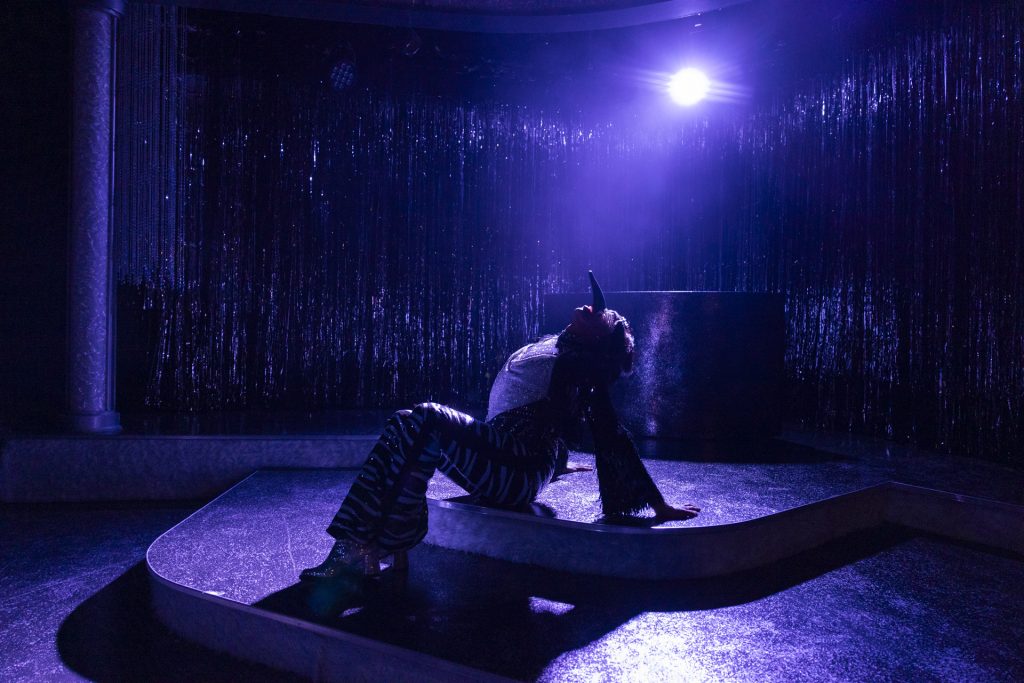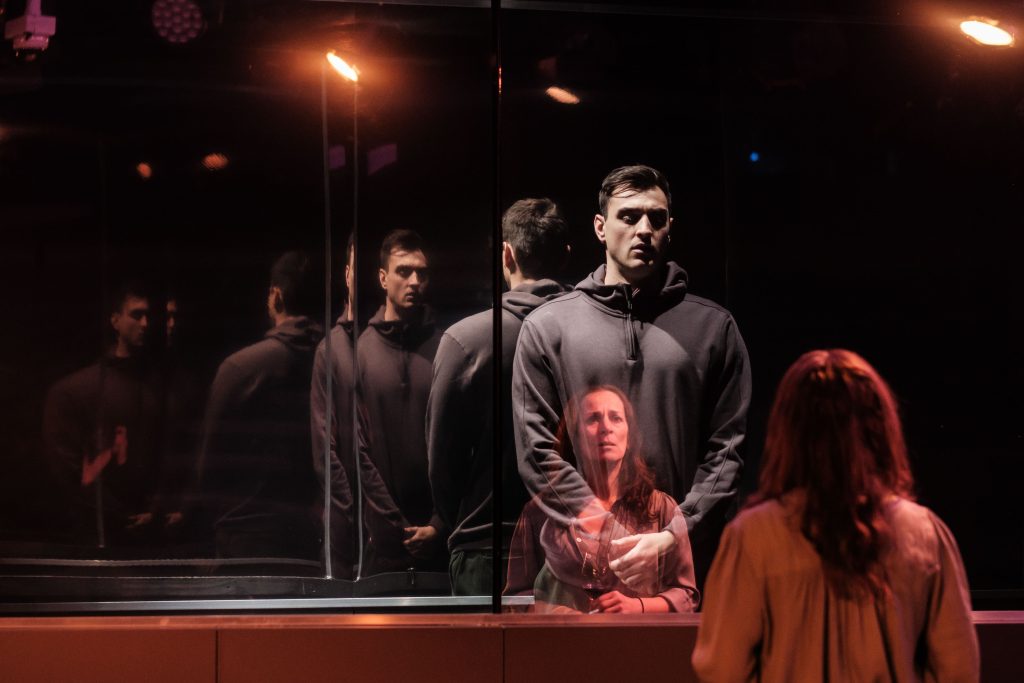17.10.23
Verity Hampson is one of Australia’s most prolific lighting designers. Her designs have featured at the SBW Stables Theatre more than any other designer of the past 20 years, and this year she has worked on three back-to-back productions at Griffin. We sat down with Verity to ask all about her illuminating career.

I first got into lighting design oh, gosh, probably about 25 years ago. I was at university studying chemistry and I started doing some lighting work because it was easy work to get out of hours. I started working on big rock’n’roll concerts—setting them up overnight and doing uni during the day. And I just kind of decided that lighting was more where I was heading than chemistry. I lit events for a few years and then I went to NIDA. I was about 23 when I started, but I’d already worked in the industry for about five years. I like the visual aspect of lighting and the combination of the science and the art. It is a science.
My first show out of NIDA was a Michael Gow play called Live Acts on Stage in 2005. The Stables Theatre already had a very long and rich history. So I thought it would be a cool idea if I went around town and gathered all the old lights that had previously lived in the old Nimrod’s stock—at some point they had been sent around to all the other theatres—lying around Belvoir and the Seymour Centre and NIDA’s basement. There’s still a few of them hanging around in the SBW Stables Theatre foyer, they’re really nice antique lights. For the show I gathered them all back up and made a sort of roof out of lights by packing the lighting rig extremely tight.
As a lighting designer I very much believe in working my design to suit the play and the production, as opposed to forcing a style of my own. It always obviously starts with the script. Then my design gets another kick on from the set design and the ideas that come through pre-production conversations. From there, the lighting design just starts to come as images say, in the shower in the middle of the night. The images in my head tend to start quite abstracted, and are not contained by the practicalities of the venue I’m working in.
I’ve been working at the SBW Stables Theatre for about 20 years now, and lighting is the department, I’d say, that has changed the most backstage. In terms of set design at the Stables, the process is fairly similar to what we were putting on there 20 years ago. But in terms of lighting, technology’s come a long way. These days we’re able to do a lot more like with special lighting states, known as ‘specials’. Back then, the LED technology we use so much now didn’t even exist. You couldn’t put a moving light of any kind in the Stables until maybe five or six years ago. It’s crazy—the variety of what we can do in that theatre now is much greater.

I’ve lighting designed the last three shows at Griffin—Pony, Jailbaby and Blaque Showgirls—and I’ve really enjoyed the variety and working in the same venue with shifting teams. In terms of differences with my process, each play had a different process at different stages. For Blaque Showgirls there was obviously an extension of a show that was already successful. Pony was a pandemic exercise. The core team of that play and Eloise, the playwright, had been working on that script and that production for years throughout the pandemic, way before I got to the into the room. And then Jailbaby was still very much in a fluid state when we got into the rehearsal room. So yeah, even though the script is always the base from which I work, the reality of the design process is different every time.
Across these three Griffin plays, some of the lighting moments I’m most proud of are the musical moments in Pony—the strip club and the climax when Ginuwine’s song Pony blasts. There’s a similar fun set of musical moments in Blaque Showgirls which I really enjoyed plotting. There’s also one moment in Pony when the protagonist is in the middle of her psychological breakdown and one night someone said to me that the lighting state made the character look like she was in the womb with her baby. The lighting state gave that effect of intimacy and introspection, which is what the play was all about—motherhood as a new phase of life. That audience comment always stuck with me because I heard that babies can see light in the womb. Light is amazing!

Jailbaby was a heavy drama and there were also challenges because a major set component was a two-way mirror, which then snowballs onto the lighting design because that becomes an element that I have to work with. We always make it work, and then there was this cool effect that made the actors disappear into infinity. Designer Isabel Hudson and I have worked together a lot now and we have developed a very quick shorthand. I mean, we’re similar personality types. There’s just no nonsense. But I mean, working as a part of different teams is always a joy at Griffin.

Witness Verity’s lighting designs for Blaque Showgirls until 21 October, 2023.

